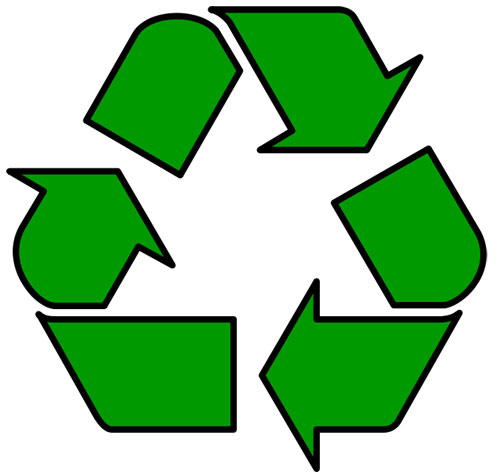
by Victor Bell, Environmental Packaging International
There’s growing interest among many of the largest brand owners, retailers and governments in promoting environmental best practices. Some of these new initiatives impact the finishing industry.
Paper-based packaging remains the most commonly used packaging material in the world – contributing nearly 40 million tons to the municipal solid waste stream in the US. Some of the common treatments applied to packaging to enhance its graphic appeal, such as hot foil stamping, laminating and metalized paper, are perceived to present challenges to local recycling processes, deeming them unacceptable. But, that’s not necessarily the case.
Is foil finished … or recyclable?
From posters and wrapping paper to greeting cards and cosmetics packaging, communities within the US approach paper embellishments differently when it comes to recycling. While some community recycling programs accept aluminum-bearing paper, others don’t accept them because of concerns about the potential appearance of aluminum particles in the recycled content paper or the difficulty in repulping fibers.
When it comes to the recyclability of these materials, the bottom line is the bottom line. And while some programs fear mixing foil in the recycling stream may diminish the value of the finished paper product, a study conducted by Smithers Pira (Pira International) confirms the recyclability and repulpability of paper products decorated by both the traditional hot stamp and new cold foil processes.
Education is key
To improve recycling rates of paper and packaging with metalized effects, more information is needed about the mechanics of the different treatment processes. For example, subtle distinctions between all of the techniques – especially between metalized paper and foil-laminated paper – can have a big impact on the collection, sorting and recyclability of packaging.
Since these differences are not well understood, reports such as the Sustainable Packaging Coalition’s “Closing the Loop: Design for Recovery Guidelines for Paper Packaging”, published in 2011, provide guidance to drive more informed decisions before putting packaging on the market.
Avoid consumer confusion
It’s not only a lack of understanding among community recycling programs or the design aspects of the packaging that impact the ways in which finished papers are disposed. Consumer behavior also can pose barriers.
Because of various treatment by the recycling facilities – or outright avoidance of metalized papers altogether – consumers are left wondering what curbside container to use. That’s where brand owners, package designers and printers can help – by accurately labeling how these materials can be collected and recycled.
While the Federal Trade Commission’s “Green Guides” are designed to prevent deceptive environmental claims, it also can be used to promote a clearer understanding among consumers about how to treat their waste.
For example, packaging must include qualifying text unless recycling programs for it are available to “a substantial majority” (at least 60 percent of either consumers or communities where it is sold). Since less than 60 percent of communities take paper with foil, one of the following types of qualifying text must be used:
- If recycling programs for the packaging are available to a “significant percentage” of consumers or communities where it is sold, then qualifying text such as “Package may not be recyclable in your area” must be included.
- If recycling programs for the packaging are available to “less than a significant percentage” of consumers or communities where it is sold, the package must include a statement such as “Product is recyclable only in the few communities that have recycling programs.”
Finally, the Möbius Loop recycle symbol only should be printed on packaging if it includes text stating “recyclable” or includes the percentage of recycled content. Otherwise, it constitutes a claim that the packaging (and product) are made of 100 percent recycled materials and are universally recyclable, which is deceptive unless the claim can be substantiated.
The impact of EPR
As Extended Producer Responsibility (EPR) expands its reach across Europe and beyond, the responsibility for packaging and printed paper recycling and disposal is increasingly shifting from local governments to private industry. By requiring producers to pay for post-consumer waste created by their products, EPR creates an incentive for producers to make packaging that is less wasteful.
While EPR is designed to encourage companies in their design and choice of materials, in certain countries this means penalizing them for ignoring recyclability. France, for example, has implemented disrupter fees, or “eco-modulation fees,” for those who contaminate the recycling stream. With this approach, producers are charged more for using material combinations that negatively affect the recycling system, such as putting a lot of plastic in paper envelopes or using a ceramic top on a glass bottle. In France, a PET bottle with at least one aluminum component, an aluminized label or aluminum pigments is considered a disruptor and is assessed a 50-percent higher fee.
When it comes to producing packaging that is designed for recyclability, it’s important to consider current recycling infrastructures, technologies and awareness during the design and manufacturing stages of development to optimize its useful life – at its end of life.
Victor Bell is president of Environmental Packaging International (EPI), a consultancy specializing in global environmental packaging and product stewardship requirements. Bell, who founded EPI in 1998, is a Certified Packaging Professional with more than 20 years of experience with environmental issues associated with packaging and products. Bell has served on the Executive Committee of the Sustainable Packaging Coalition and is currently serving on the Global Packaging Project and ISO Packaging Standard committees.
This article was originally published in the May-June 2012 issue of InsideFinishing magazine.

